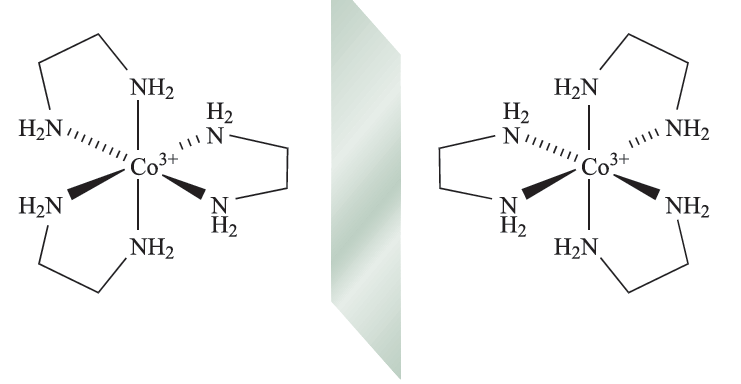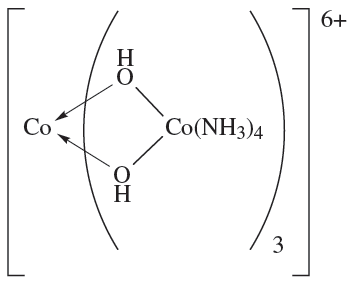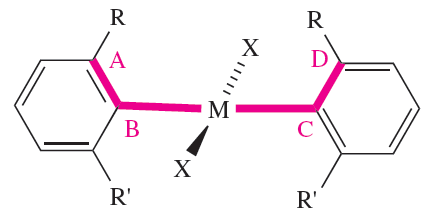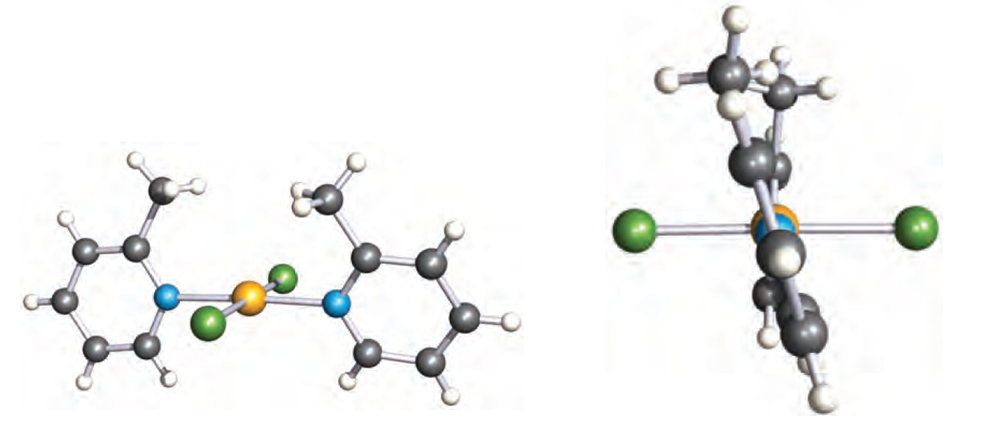
Stereoisomerism: optical isomers
 المؤلف:
CATHERINE E. HOUSECROFT AND ALAN G. SHARPE
المؤلف:
CATHERINE E. HOUSECROFT AND ALAN G. SHARPE
 المصدر:
INORGANIC CHEMISTRY
المصدر:
INORGANIC CHEMISTRY
 الجزء والصفحة:
2th ed p 549
الجزء والصفحة:
2th ed p 549
 28-2-2017
28-2-2017
 1256
1256
Stereoisomerism: optical isomers
Optical isomerism is concerned with chirality, and some important terms relating to chiral complexes are defined in Box 19.2. The simplest case of optical isomerism among d-block complexes involves a metal ion surrounded by three didentate ligands, for example [Cr(acac)3] or [Co(en(3]3+ (fig. 1.1).

Fig. 1.1 The octahedral complex [Co(en)3]3+ contains three didentate ligands and therefore possesses optical isomers, i.e. the isomers are non-superposable mirror images of each other.
These are examples of tris-chelate complexes. Pairs of enantiomers such as Δ- and Λ-[Cr(acac)3] or Δ- and Λ-[Co(en)3]Cl3 differ only in their action on polarized light. However, for ionic complexes such as [Co(en)3]3+, there is the opportunity to form salts with a chiral counter-ion A-. These salts now contain two different types of chirality: the Δ- or Λ- chirality at the metal centre and the (+) or (_) chirality of the anion. Four combinations are possible of which the pair {Δ-(+)g and {Λ-(_)} is enantiomeric as is the pair {Δ-(_)} and {Λ-(+)} However, with a given anion chirality, the pair of salts {fΔ-(_)} and {Λ-(_)} are diastereomers (see Box 19.2) and may differ in the packing of the ions in the solid state, and separation by fractional crystallization is often possible. Bis-chelate octahedral complexes such as [Co(en)2Cl2]+ exist in both cis- and trans-isomers depending on the arrangement of the chloro ligands. In addition, the cis-isomer (but not the trans) possesses optical isomers. The first purely inorganic complex to be resolved into its optical isomers was [CoL3]6+ (1.1) in which each L ligand is the complex cis-[Co(NH3)4(OH(2]+ which chelates through the two Odonor atoms.

(1.1)
Chirality is not usually associated with square planar complexes but there are some special cases where chirality is introduced as a result of, for example, steric interactions between two ligands. In 1.2, steric repulsions between the two R groups may cause the aromatic substituents to twist so that the plane of each C6-ring is no longer orthogonal to the plane that defines the square planar environment around M.
Such a twist is defined by the torsion angle A–B–C–D, and renders the molecule chiral. The chirality can be recognized in terms of a handedness, as in a helix, and the terms P and M (see Box 19.2) can be used to distinguish between related chiralmolecules. If, in 1.2, the Cahn–Ingold–Prelog priority of R is higher than R’ (e.g. R = Me, R’ = H), then a positive torsion angle corresponds to P-chirality. An example is trans- [PdCl2(2-Mepy)2] (2-Mepy = 2-methylpyridine), for which the P-isomer shown in Figure 1.2.

(1.2)

Fig. 1.2 Two views of the structure (X-ray diffraction) of trans-[PdCl2(2-Mepy)2] (2-Mepy = 2-methylpyridine) showing the square planar environment of the Pd(II) centre and the mutual twisting of the 2-methylpyridine ligands. The torsion angle between the rings is 18.68 [M.C. Biagini (1999) J. Chem. Soc., Dalton Trans., p. 1575]. Colour code: Pd, yellow; N, blue; Cl, green; C, grey; H, white.
 الاكثر قراءة في كيمياء العناصر الانتقالية ومركباتها المعقدة
الاكثر قراءة في كيمياء العناصر الانتقالية ومركباتها المعقدة
 اخر الاخبار
اخر الاخبار
اخبار العتبة العباسية المقدسة


